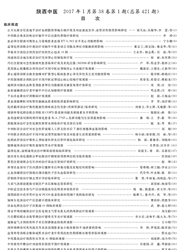

 中文摘要:
中文摘要:
目的:探讨不同血糖控制目标对腹部术后重症应激性高血糖影响。方法选择开腹部术后发生应激性高血糖患者76例,随机分为A组和B组,每组38例,A组和B组分别以(7.8-10.0)mmol/L和(4.5-8.3)mmol/L作为血糖控制目标,采用相同胰岛素干预方案,对比两组血糖达标时间、生化指标、血糖控制不良反应、并发症、住院时间。结果 A组和B组血糖控制达标时间比较,差异有统计学意义(P〈0.05),A组在术后72 h内血糖均逐渐降至正常范围内,A组降钙素原和C反应蛋白值显著低于B组(P〈0.05),两组均未发生高渗性昏迷,A组低血糖和严重低血糖发生率显著低于B组(P〈0.05),两组均无死亡病例,两组切口感染、腹腔感染、肺部感染、败血症及住院时间比较,差异均无统计学意义(P〉0.05)。结论腹部手术后应激性高血糖患者血糖控制在(7.8-10.0)mmol/L范围更有利于减轻患者术后机体免疫系统应激反应,降低低血糖发生率,并不增加术后感染发生,具有良好的术后获益和安全性。
 英文摘要:
英文摘要:
Objective To explore the different stress hyperglycemia blood sugar control target of the impact of severe abdominal surgery. Methods Chose open abdominal postoperative stress hyperglycemia 76 patients were randomly di-vided into group A and group B, each of 38 cases, A and B, respectively, to 7.8-10.0 mmol/L or 5.6-8.3 mmol/L as glycemic control targets, used the same insulin intervention programs, compared two groups of blood glucose time,biochemical parameters, glycemic control adverse reactions, complications, length of hospital stay. Results A group and B group blood sugar control standard time,the differences were statistically significant (P〈0.05), A group within 72h after surgery were gradually reduced blood sugar within normal range, A group of procalcitonin and C-reactive protein values were significantly lower than group B (P〈0.05), the two groups did not occur hyperosmolar coma , A group of hypoglycemia and severe hypoglycemia were significantly lower than group B (P〈0.05), were no deaths ,wound infection, abdominal infections, lung infections, sepsis, incidence of death and hospitalization time , the dif-ferences were not statistically significant(P〉0.05). Conclusion Abdominal surgery in patients with stress hyperglycemia blood sugar control in 6.0-10.0 mmol/L range were more conducive to the body's immune system to reduce postopera-tive stress response, reduce the incidence of hypoglycemia, does not increase postoperative infection, with good post-operative benefit and safety.
 同期刊论文项目
同期刊论文项目
 同项目期刊论文
同项目期刊论文
 期刊信息
期刊信息
